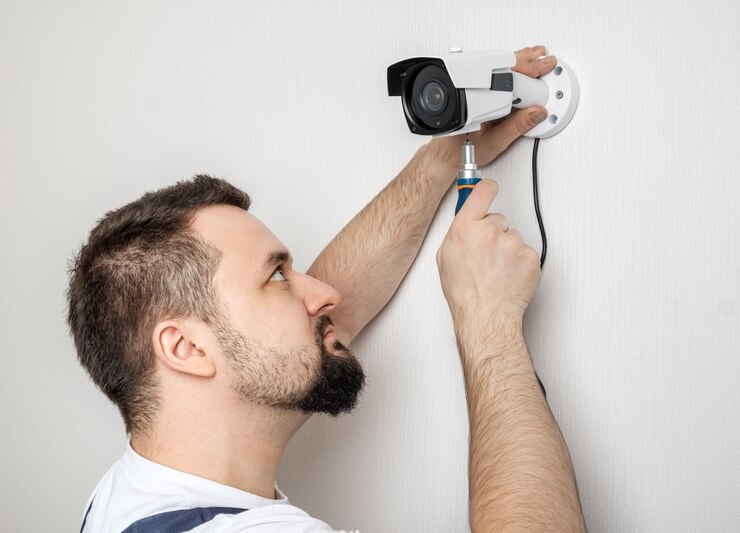How to ensure your video surveillance installation complies with privacy laws?
Video surveillance systems must run within legal privacy criteria to protect personal rights and prevent legal issues. Surveillance systems must...

Video surveillance systems must run within legal privacy criteria to protect personal rights and prevent legal issues. Surveillance systems must abide by legal rules if they are to support moral monitoring methods for security policies. Unauthorized use of camera systems in forbidden locations and surveillance footage can result in serious consequences, including legal ones and privacy invasions.
Businesses and homeowners have to understand the importance of following guidelines that define camera installation points and video footage management techniques. Effective implementation of necessary procedures helps companies reach security goals while maintaining legal compliance. Together with protection of personal private rights, a complete video surveillance system helps security goals to be reached.
Understanding Legal Guidelines for Ethical Surveillance Practices
Despite their different privacy regulations, all governments uphold a basic privacy protection concept against unwelcome surveillance monitoring. Surveillance systems have to operate under legal constraints in order to stop needless intrusion into personal private areas. Surveillance devices should not capture images from places that ensure privacy protection, such as bathrooms and private offices. The first step to prevent surveillance devices from invading personal private rights is awareness of these legal limits.
By means of appropriate consent acquisition and notification of surveillance operations, companies can satisfy legal requirements. Companies spread over several areas must show obvious signals to alert people about surveillance devices. Signage warns staff members and guests that their activities are under monitoring. Those who use video footage are at legal risk if they monitor without reporting. Clear video recording rules increase legal compliance and help prevent disputes. Following data protection guidelines helps companies to reach managed access rights and safe data storage. Encryption technology, in addition to password security, restricts unauthorized access, thereby lowering the risks of data breaches. By using ethical and legal approaches to surveillance, the protective measures put in place satisfy security needs and privacy protection.
How Can Cameras Be Placed Strategically to Prevent Privacy Violations?
The meticulous placement of cameras satisfies legal privacy requirements and offers the required security. Correct camera placement lowers legal risks and addresses issues with illegal access.
- Maximum Safety Without Privacy Intrusion: Installing cameras at parking lots and entrances along with hallways improves security and guards private areas. Using camera angles coupled with privacy filters serves as a twofold strategy to stop inadvertent surveillance of surrounding locations.
- Compliance in Public and Workplace Settings: Common area surveillance is usually allowed; however, covertly watching staff members at the workplace can cause legal problems. Employee openness builds confidence.
- Preventing Legal Conflicts: Companies that mix thorough installation plans with alerts to affected individuals about surveillance activities uphold ethical and legal requirements and lower conflict risk.
Implementing strong data security measures for compliance
The application of strong data security policies determines much of the compliance of video surveillance systems. One of the most important duties is still safeguarding gathered video against illegal access and possible leaks. Legal liability issues arise for companies when poor security policies let recorded data reach illegal hands. Combining access control systems with encryption methods creates the basis for protecting surveillance video from illegal users.
Compliance with privacy laws calls for appropriate retention policies. Legal violations could result from surveillance films maintained past the required times without appropriate explanation. Following the rules for surveillance film retention times aids organizations in maintaining effective storage management. After their retention time ends, organizations must use safe deletion techniques to guard outdated recordings from illegal access.
Managing surveillance systems mostly depends on controlling access to captured video. Just authorized staff members should have access to surveillance data. Access logs and audit trails give companies tracking capability for who viewed surveillance footage and why. Measures of responsibility help to prevent the recording of abuse and enforce compliance with ethical and legal standards.
Maintaining transparency and accountability in surveillance practices
Operations of surveillance must be open to satisfy legal compliance requirements. Clearly expressed surveillance rules to staff members and consumers help to foster confidence and avoid misinterpretation. Signage alerting individuals about continuous video surveillance activities must be shown in obvious places. By means of awareness raising, the technique not only satisfies legal criteria but also reduces security threats.
Frequent audits of surveillance systems by means of continuous monitoring guarantee continuous privacy rule compliance. Regular evaluations of camera placements and data system controls as well as access management systems help firms to identify any legal infractions before they become more severe. Businesses and property owners have to keep informed about legislative changes to make sure their monitoring procedures continue to be compliant.
Companies have to assess their security systems to see if certain cameras are necessary for appropriate monitoring management. Removing or relocating cameras that fail to enhance security protocols is necessary. This approach reduces privacy concerns and helps eliminate pointless data collection. Good video monitoring guarantees that security operations support ethical monitoring practices and follow legal norms.
Conclusion: Achieving secure and compliant video surveillance
Using strategic strategies and consistent assessments helps businesses reach compliance with privacy laws through video surveillance installation in Tacoma. Legal criteria must be followed by every surveillance element, upholding ethical standards from the first camera placement to data security mechanisms. To prevent legal issues and design security systems that respect privacy rights, companies and homeowners should stay updated on current regulations.
By using ethical-based monitoring technologies, companies can guard individuals and help to avoid legal problems. Companies like Connect and Protect LLC specialise in secure and lawful surveillance installations, providing expert guidance on compliance and privacy protection.






